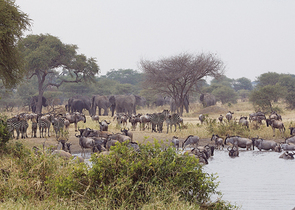Nature Conservation 2/2013 — 21. 6. 2013 — International Nature Conservation — Print article in pdf
Pelc F. & Plesník J.: National Parks all over the World: Various Appearances, but the Same Goals and
různá podoba, ale stejný cíl
In North America and often also in Africa, Latin America and Australia, national parks usually are large areas with exceptionally landscape scenery/character, less populated by humans: they combine ecosystem protection with recreation. On the other hand, in Europe, when declaring national parks, more attention is paid to fauna and flora. National parks are often not so extensive and in some cases, they are more strictly protected there, having the more strict tourism regulation than e.g.in the United States. Thus, individual nations designate their own national parks differently. Under the International Union for Conservation of Nature (IUCN) categories, a national park (category II) is a large natural or near natural area set aside to protect large-scale ecological processes, along with the complement of species and ecosystem characteristic of the area, which also provide a foundation for environmentally and culturally compatible spiritual, scientific, educational, recreational, and visitor opportunities. Nevertheless, many existing parks all over the world have very different aims from those defined by the IUCN under category II. Thus, national parks are listed n each IUCN category: the fact that an area is called a national park is independent of its management approach. At present, there are 4,807 national parks all over the world, classified as category II (4.2 % of all protected areas included into the World Database on Protected Areas). Despite their classification, according to the IUCN management categories framework (2008), national parks follow a common idea: the conservation of nature affected by humans as little as possible for posterity and a symbol of national pride.


